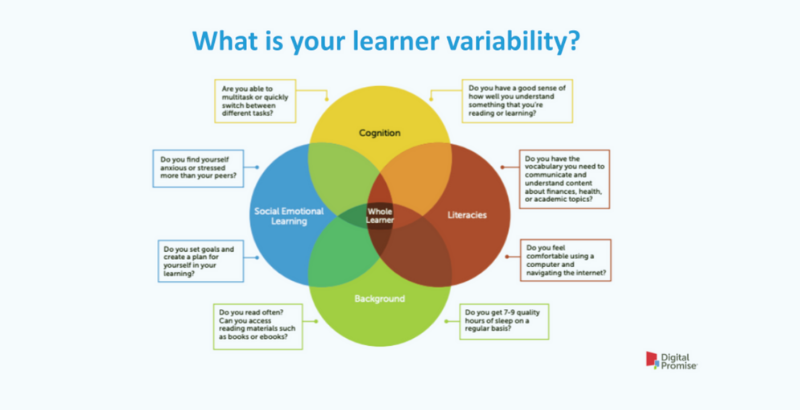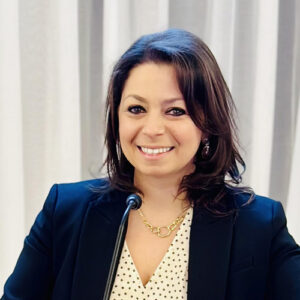Cipriano & Pape: Building a Climate of Belonging in Schools Opens the Door for Robust — and Joyful — Teaching and Learning

Get stories like this delivered straight to your inbox. Sign up for The 74 Newsletter
Can you think of a time you found yourself somewhere new and were given a sign that people like you didn’t belong there? Walked into a restroom holding your infant and there was no changing table? Noticed the street signs were in a language you didn’t know? Realized you were the only Black person there? Needed a ramp and there were only stairs? Signs like these likely triggered a feeling you should leave and never go back.
But what if you have to go back? What if you are 7 years old, and it’s not a fleeting, one-time experience, but it happens every day at your school. In your classroom. With your teachers and classmates. And it’s not one signal; it’s nearly all signals. It’s the images on the walls, the pictures in the books, the holidays recognized, the way nonbinary children and gay parents are stigmatized. Each school norm reinforces how students like you should look, behave and learn. Except they don’t include you.
Children won’t learn if the signals that schools send tell them they don’t belong there. And while U.S. schools are less likely than ever before to exclude students based on their differences, inclusion is an activity, not a placement. The common responses — one-off efforts and short-term initiatives on diversity, equity and inclusion — may be popular, but they are not the right approaches. Simply having students with a wide array of strengths and needs does not make a classroom inclusive, and periodic training sessions that are disconnected from children’s experiences in and out of school do not equip teachers to equitably serve them.
Instead, schools must create a sense of belonging that allows students to feel included, respected and supported. Belonging is strongly tied to identity and evidenced through the validation of a variety of backgrounds, experiences and cultures. When done right, schools can foster healthy and positive development in their students, particularly important for those who have been historically marginalized. Yet, the National Association of Secondary School Principals has found that nearly a quarter of middle school students and a third of high school students feel they don’t belong. Addressing this can start by better understanding and celebrating learner variability — recognizing that every student has unique strengths and challenges that are interconnected and vary according to the learning environment that child is learning in or experiencing.
Here are some strategies schools can use to nurture a sense of belonging for each student:
- Create safe spaces. Safety is a prerequisite for belonging. Turnaround for Children offers teachers a series of suggestions that are as simple as framing classroom norms around “do’s” that guide relationship building (respect, responsibility, kindness) rather than “don’ts” (don’t touch, talk, move). Key is to develop this set of norms with students, which enhances buy-in.
- Continuously affirm that all students belong. Focusing on the “average” student implicitly neglects individual identity and can lead to what Harvard professor and author Todd Rose describes as a “harmful binary such as abled/disabled, fit/unfit, intelligent/non-intelligent.” Recognizing that classroom design, rather than students who don’t fit the mythical average, is the real problem is an essential step. Combining anti-racist and anti-ableist practice with frameworks like Universal Design for Learning and culturally responsive teaching can help educators shift from questions that focus on the student (“how are individuals disabled?”) to those that consider flaws in the system (“how are learning environments disabling”) to support the development of more truly inclusive systems.
- Facilitate an understanding of overlapping identities. No one has solely one identity, and the intersection of identities can bear many consequences for students. From an early age, children can recognize their own uniqueness and develop an appreciation for their classmates’ variability. A new resource developed by Educate All Learners Alliance partners consists of classroom posters that depict students’ unique identities. An accompanying teacher guide supports conversations among students about what makes them unique and helps foster an appreciation for the variability in all of us.
- Activate a strengths-based approach to teaching and learning. Identify, communicate and harness students’ assets to promote flourishing in and out of school. Focus on 21st century skills alongside academic strengths. Brooklyn Laboratory Charter Schools and Digital Promise launched the IEP Project, which provides teachers with a set of reflective questions and strategies for writing up Individual Education Plans that consider each child’s strengths to mitigate challenges.
- Promote student agency and voice. This requires deliberate action by educators to ensure all learners feel safe and trusting of their school. InspirED is a Yale Center for Emotional Intelligence program anchored on the belief that young people’s voices matter and that they can be change agents in improving their school experience. Through active engagement with their own school’s climate data, inspirED encourages students not to avoid uncomfortable or unpleasant emotions, but rather to fully engage with their worry about peers’ safety, surprise at unexpected responses, curiosity about demographic differences in data or dissatisfaction with the school environment. In this way, they can become catalysts in improving their school for themselves and their peers.
Belonging is crucial to the human condition. Schools that intentionally develop environments that actively include each learner are more able to construct pathways with students that will help them meet their potential in school and beyond. Building a climate of belonging in classrooms and schools is a sure path to active inclusion of each and every learner. And a door opener for robust and joyful teaching and learning.
Christina Cipriano, Ph.D., is an assistant professor at the Child Study Center at the Yale School of Medicine and director of research at the Yale Center for Emotional Intelligence. Barbara Pape, Ed.M., is senior director of the Learner Variability Project at Digital Promise.
Get stories like these delivered straight to your inbox. Sign up for The 74 Newsletter

;)
